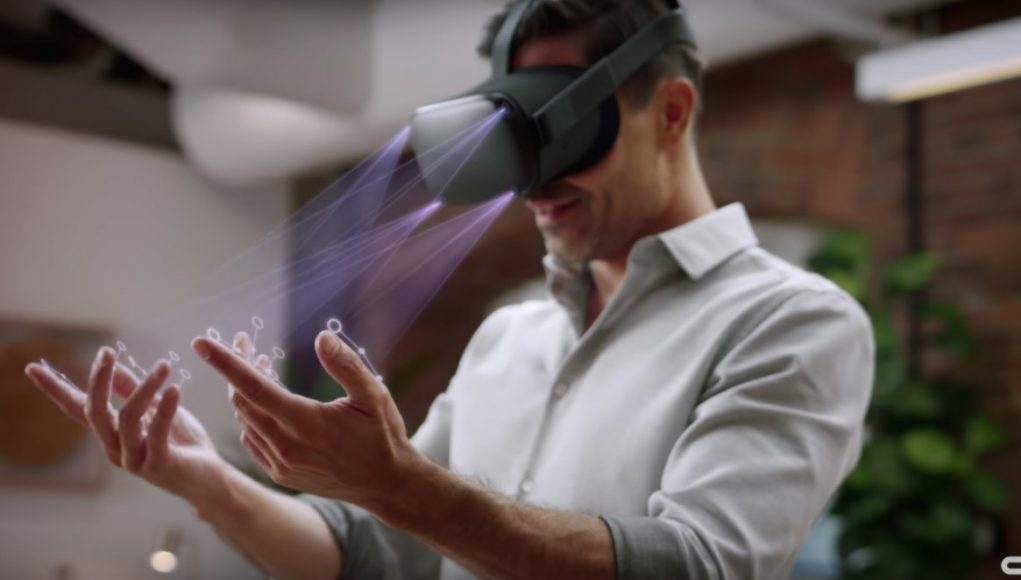Oculus announced today that hand-tracking on Quest will start rolling out sometime this week with basic functionality. A hand-tracking SDK will be made available next week, giving developers the ability to create third-party applications which use the new feature.
Oculus announced earlier this year that hand-tracking was heading to Quest, though initially they didn’t expect the feature to launch until early 2020. They’ve accelerated that schedule—apparently to get the initial release out the door in time for the holidays—which means that hand-tracking is headed to Quest headsets starting this week with the release of v12 software.
Enable Oculus Quest Hand-tracking
Updates roll out to headsets over the course of a few days; Quest will automatically update when it can (make sure it’s plugged in and in standby), though you may be able to catch the update a bit early by putting on the headset and heading to Settings > See All > About and looking for an update button (it will not appear if the update is not yet available to your headset). Once you’re able to download the v12 update, access the Experimental Features menu to enable Oculus Quest hand-tracking.
With hand-tracking enabled, you’ll see floating cursors near your hands which correspond to a floating pointer on the Quests menus. A pinching gesture is used as a ‘click’ for button presses, or a ‘click and hold’ for dragging scrollable areas.
Quest Hand-tracking Game & App Compatibility and SDK
Oculus is calling this an “early consumer feature” and notes that the initial release will allow users to enable hand-tracking as an experimental option, enabling them to control Quest’s home menu interface and a small number of first-party apps like Oculus Browser and Oculus TV. This will likely expand to more first-party apps over time.
Hand-tracking will not work with third-party games and applications unless they are specifically updated for the feature; Oculus plans to release the hand-tracking SDK, which will allow developers to tap into the feature, on December 16th.
Because of the significant difference between hands and controllers with regards to input precision and capabilities, most existing Quest games built for controllers aren’t likely to get updated to work with hand-tracking. For instance, we don’t expect a game like Moss updated for hand-tracking (because of its heavy use of the controller’s sticks and buttons), but a more casual app like Bigscreen would be better aligned with the capabilities of hand-tracking.
In the future Quest will likely see a new class of casual apps which are specifically designed around the ease-of-use of hand-tracking, while more heavily interactive game-focused apps will continue to make use of controllers.
Indeed, in today’s announcement Oculus said it hopes the feature will “make VR more approachable for newcomers to try by removing the need to learn controller functions.” The company expects hand-tracking to enhance and enable new use-cases on Quest, including “more expressive gestures in social apps to more efficient workflows in business training modules, and more.”
Update (December 9th, 11:05AM PT): Oculus reached out to clarify that Quest’s experimental hand-tracking feature will start rolling out some day this week but not necessarily today. A prior version of this article stated that the update would begin rolling out today; this has been corrected above.







